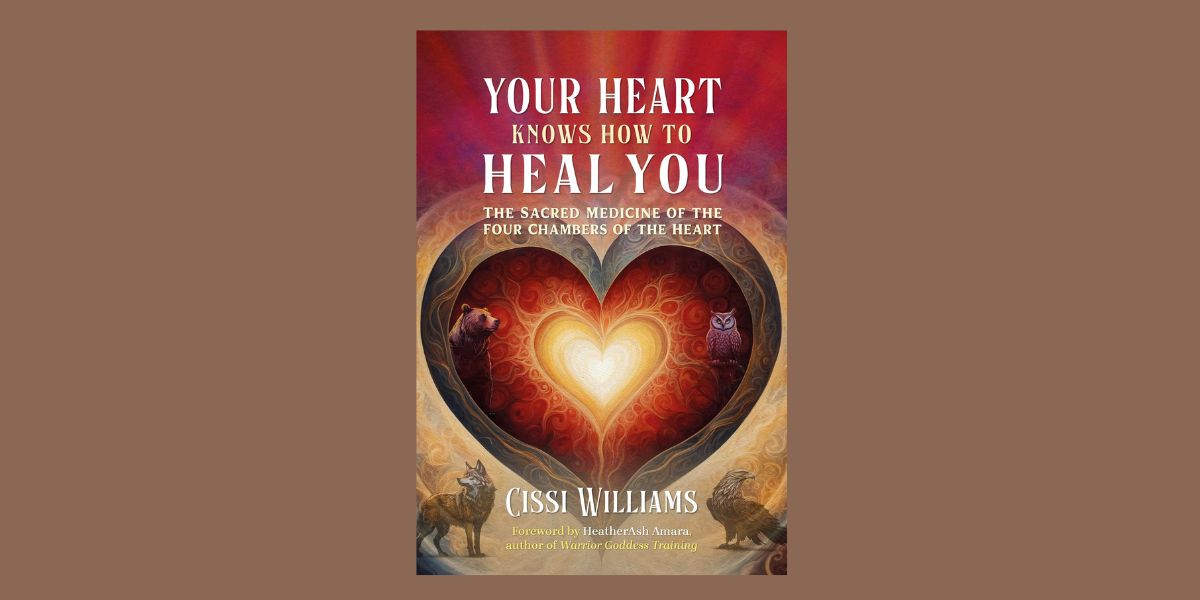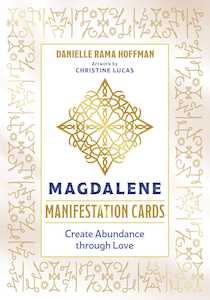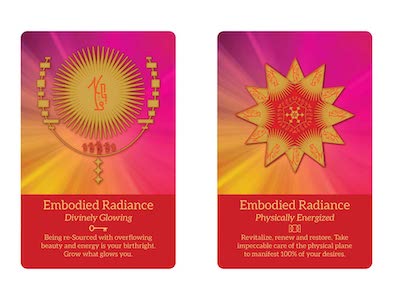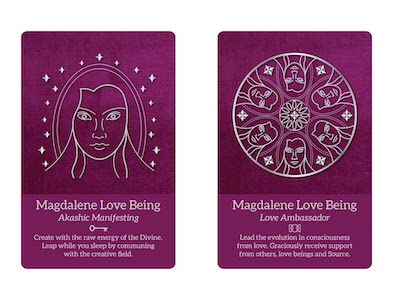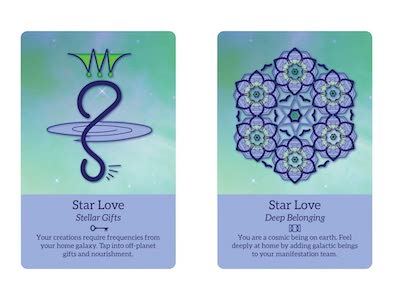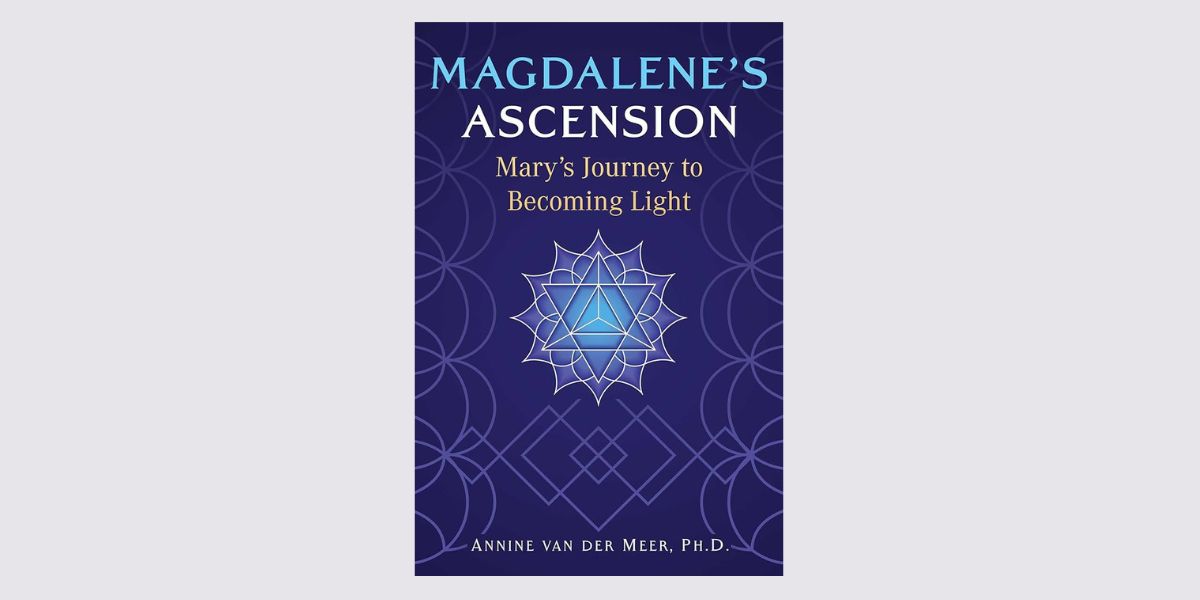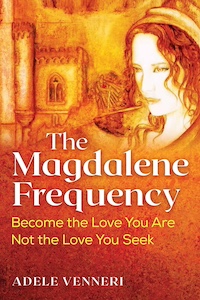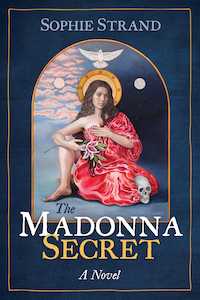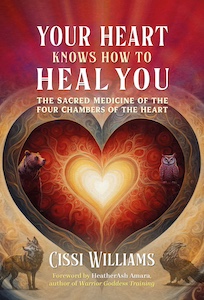
Your Heart Knows How to Heal You: The Sacred Medicine of the Four Chamber of the Heart, by Cissi Williams
Findhorn Press, 9798888502044, 256 pages, April 2025
In her latest book, Your Heart Knows How to Heal You: The Sacred Medicine of the Four Chamber of the Heart, Cissi Williams writes an inspiring and transformative guide for anyone wanting to embrace their inner power and heal emotional wounds. Williams takes the reader on a journey from your head to your heart then deep into the inner chambers for healing and rewriting your own story.
Cissi Williams has a masterful background in physical, emotional, and spiritual healing. She is an osteopath and a naturopath, while also being trained in NLP, hypnosis, energy medicine, and shamanism. In her work with clients, she has created a unique healing method that combines each of these healing modalities to heal the body, mind, soul and spirit. Through her teachings and podcasts, she has supported thousands of people in healing their lives. Originally from Sweden, Williams lives with her husband and two daughters in the Cotswolds, England. Learn more on her website.
Drawing from her vast experience as a spiritual guide and healer, Williams offers a practical blueprint for self-discovery, emotional freedom, and spiritual growth. What sets Your Heart Knows How to Heal You apart is its ability to blend the magic and mythology of healing with shamanic journeys and journaling. The result is a holistic approach that encourages readers to listen to the wisdom of their hearts, trust their inner guidance, and reconnect with the essence of who they truly are.
Williams divides the book into three parts:
Part 1: From the Head to the Heart
Part 2: Journey into the Sacred Medicine of the Four Chambers of Your Heart
Part 3: Weaving Your Heart’s Wisdom into Your World
In the brief introduction, Williams shares her story and what led to her experiences and the healing tools she now shares. She experienced a heart attack prior to her 52nd birthday and she came to know this:
“At that moment in the waiting room at the hospital as I made this decision to let my heart heal me, I was filled with a deep inner peace. I just knew that somehow everything would be fine.”1
Next, she shares that the structure of the book will support the reader to move from “your head to your heart”2, explore the four chambers of the heart with shamanic journeys and learn to listen to your heart.
Although I was familiar with the concept of the four chambers of the heart, I was not aware of the idea that the four chambers mirror the four seasons. The first chamber brings “the medicine of healing and letting go”3 and aligns with the season of autumn. In the second chamber of the heart, we find “the medicine of transformation”4 and the winter season. For the third chamber, Williams mentions “the medicine of the magical light”5 and the energy of spring. Finally, we have the fourth chamber and “the medicine of rebirth”6, corresponding to summer.
After a brief explanation of shamanic practices, Williams shares how to best use the written shamanic journeys for your own healing. She also invites you to go to her website, where she has recorded these guided journeys. It is an easy sign-up process for access to a brief introduction, a journal, nine shamanic journeys, and three prayers.
Williams also includes mythological information on the Tree of Life, numerous goddesses, such as Freya, Mary Magdalene, Hel, and Brigid. In doing so, you can learn about your nervous system and receive wisdom from your body. In this same chapter, she discusses the chakra system and how to work with it through shamanic energy medicine. She includes another “shamanic journey to cleanse your chakras and tune into the Tree of Life.”7
The chapters on the four chambers of the heart comprise the most important sections of the book. Again, she weaves in goddesses and spirit animals to support your healing journey. At the core of the book lies the belief in the heart’s innate intelligence. Williams emphasizes that the heart is not only a metaphorical source of love but also a powerful guide for decision-making and healing. She encourages readers to tap into the heart’s wisdom through practices such as visualization, chakra work, and shamanic journeys. These tools allow readers to cultivate a deeper sense of self-compassion and intuitive clarity.
My favorite chapter is Chapter 8, which is in Part 3 and is entitled “Re-writing Your Story.” Williams shares the story of Mary Magdalene and Glastonbury, which has long been held as the “heart chakra of the world”8. Next, she takes the reader through a shamanic journey to connect with both Mary and Glastonbury.
As the reader is supported to release old fears, receive “medicine from the four elements”9 and learn to weave magic from various chakras, they are also led to write a letter to Mary that highlights a new life story. This is so powerful and healing!
Wiliams has included many resources and navigational aids, such as the table of contents, and a recap that suggests specific chapters for aspects of life. She also includes a closing prayer and a resource list of books and oracle decks, as well as other sources and websites for more guided shamanic journeys. Additionally, there’s a recap of shamanic journeys and exercises from the book. This makes it easy for the reader to find a specific exercise, line of questioning, or guided journey.
Williams’ tone is compassionate and non-judgmental, creating a sense of safety and encouragement; her writing style is warm and relatable. Each chapter is interwoven with meditations, visualizations, and shamanic journeys, making the book not just an intellectual read but an experiential process. I’m particularly pleased that she provides audio of the guided shamanic journeys on her website. This offering makes the book even more supportive for transformation and healing.
Whether you are new to self-healing practices or a seasoned spiritual seeker, Your Heart Knows How to Heal You has something to offer. It is accessible for beginners, with its clear explanations and step-by-step instructions, yet it is profound enough for those well-versed in shamanism and spiritual growth. As Williams shares on the first page of her book:
“For all the mothers and grandmothers, sisters, and daughters–may we awaken the feminine wisdom that is embedded within our bones, flowing through our veins, and wired into our DNA, so that we can weave our healing medicine into our world.”10

PJ Spur is an author, intuitive, spiritual mentor, astrologer, and hypnotist. She does tarot & oracle card readings, natal chart readings, grief coaching, and relationship healing. She also has hosted a weekly “Coffee & Cards” event with her Soul Compass Community for the past four years. Her book Navigating Grief with Grace is available on Amazon. Learn more at www.dearpj.com
